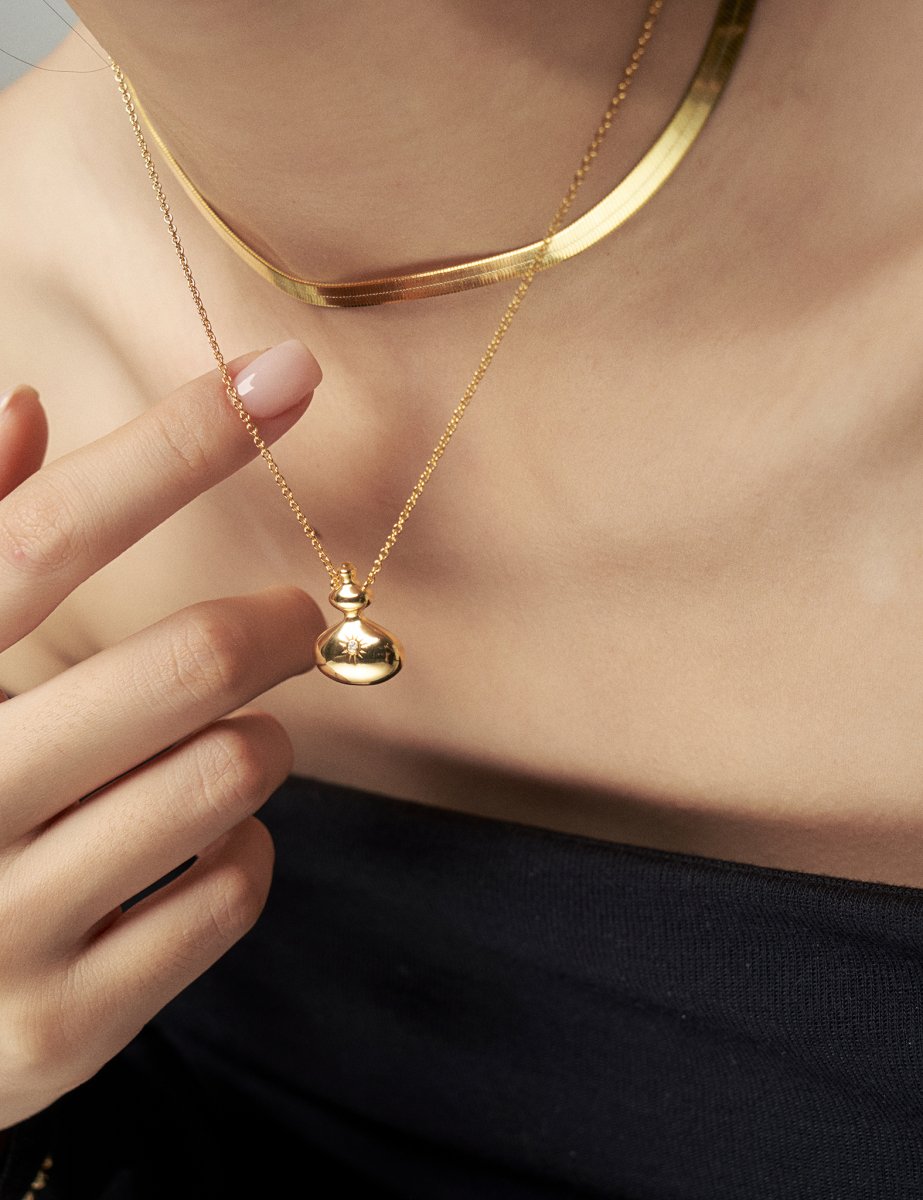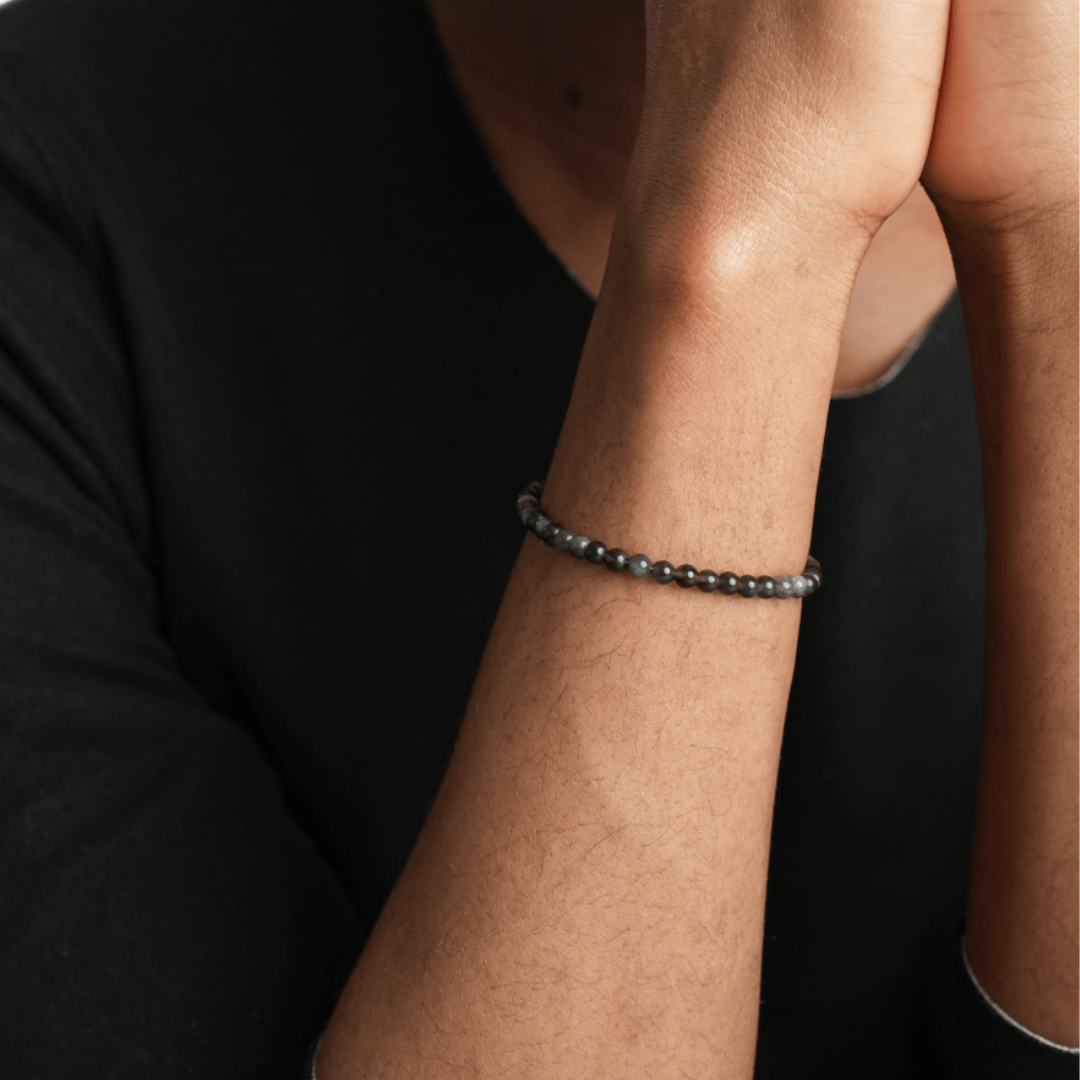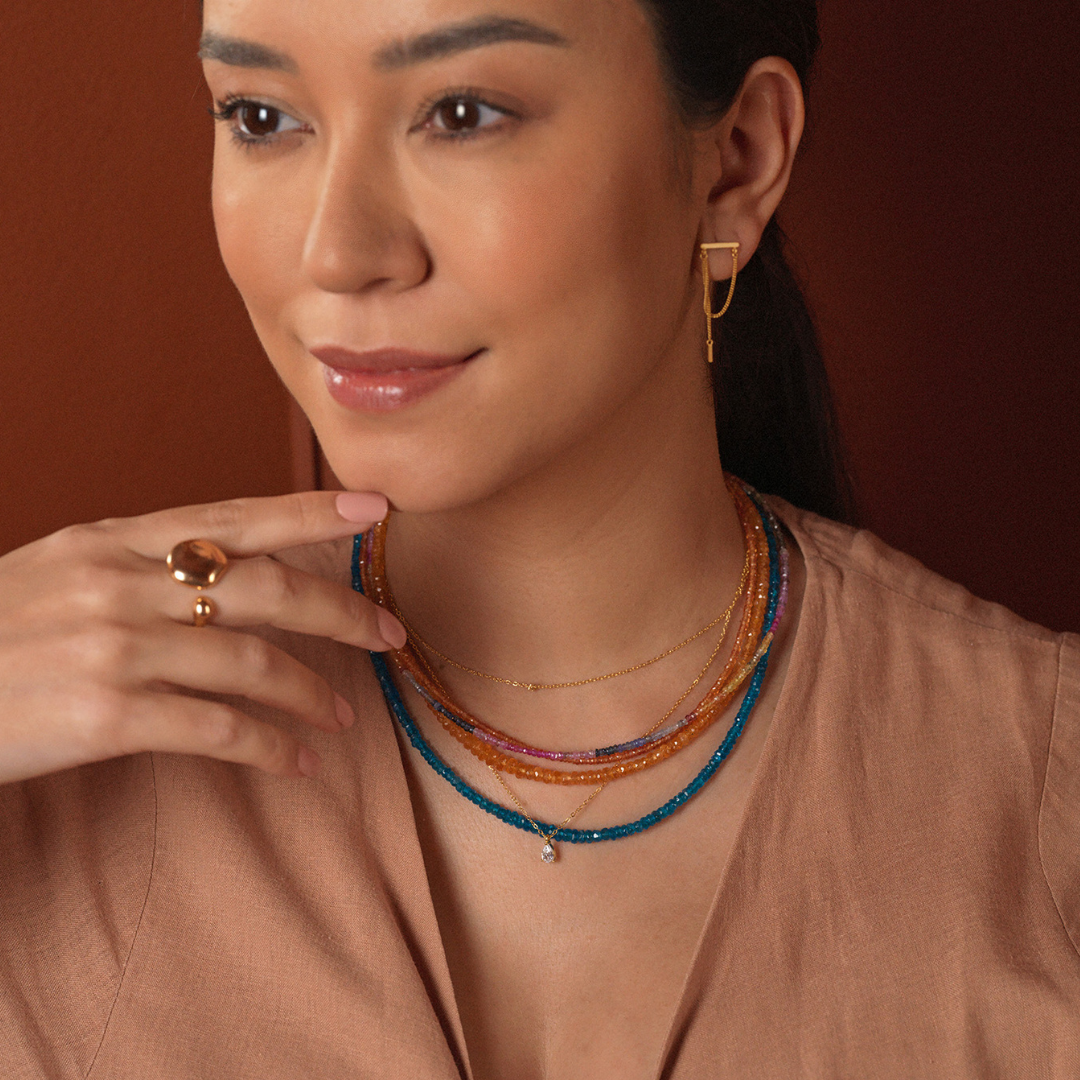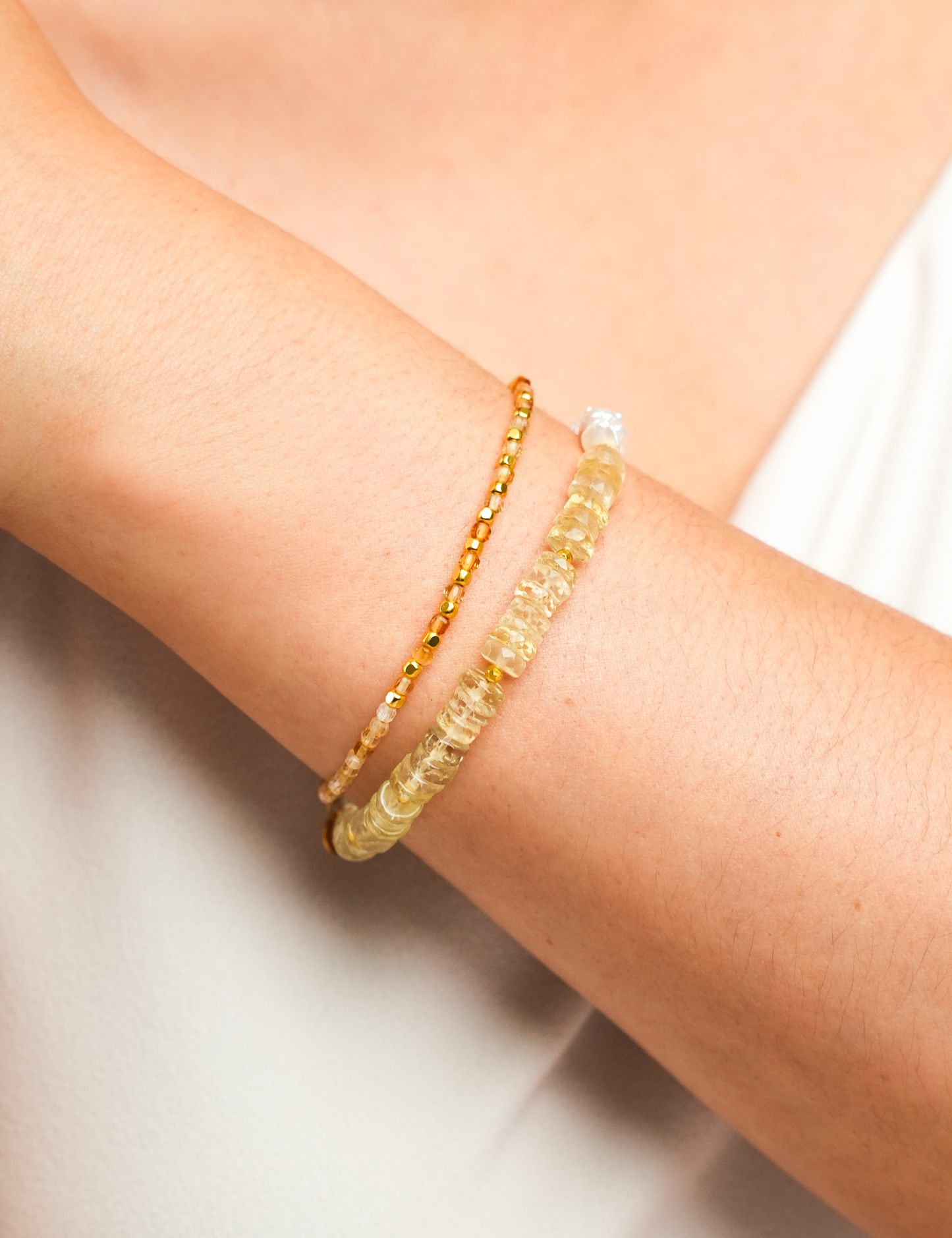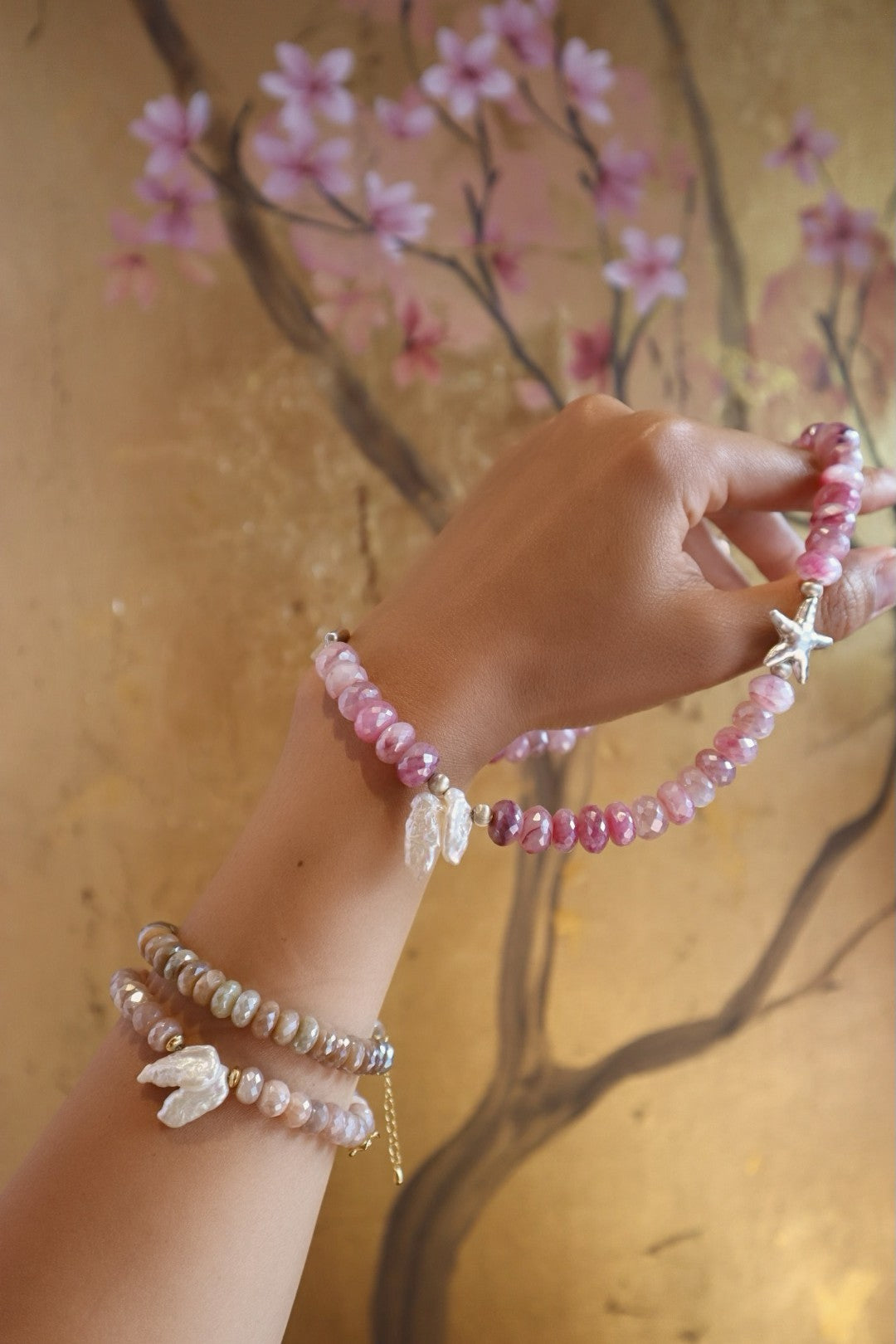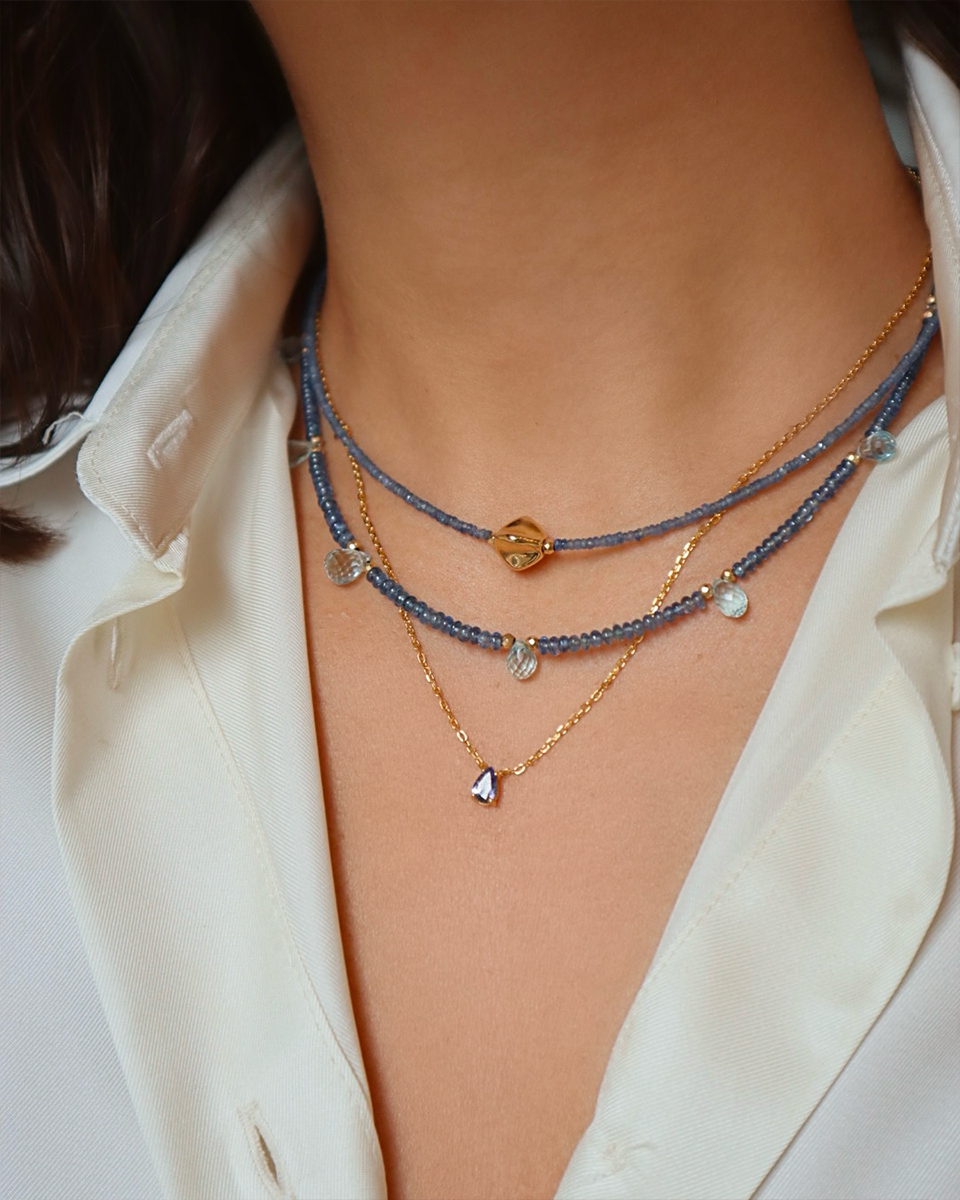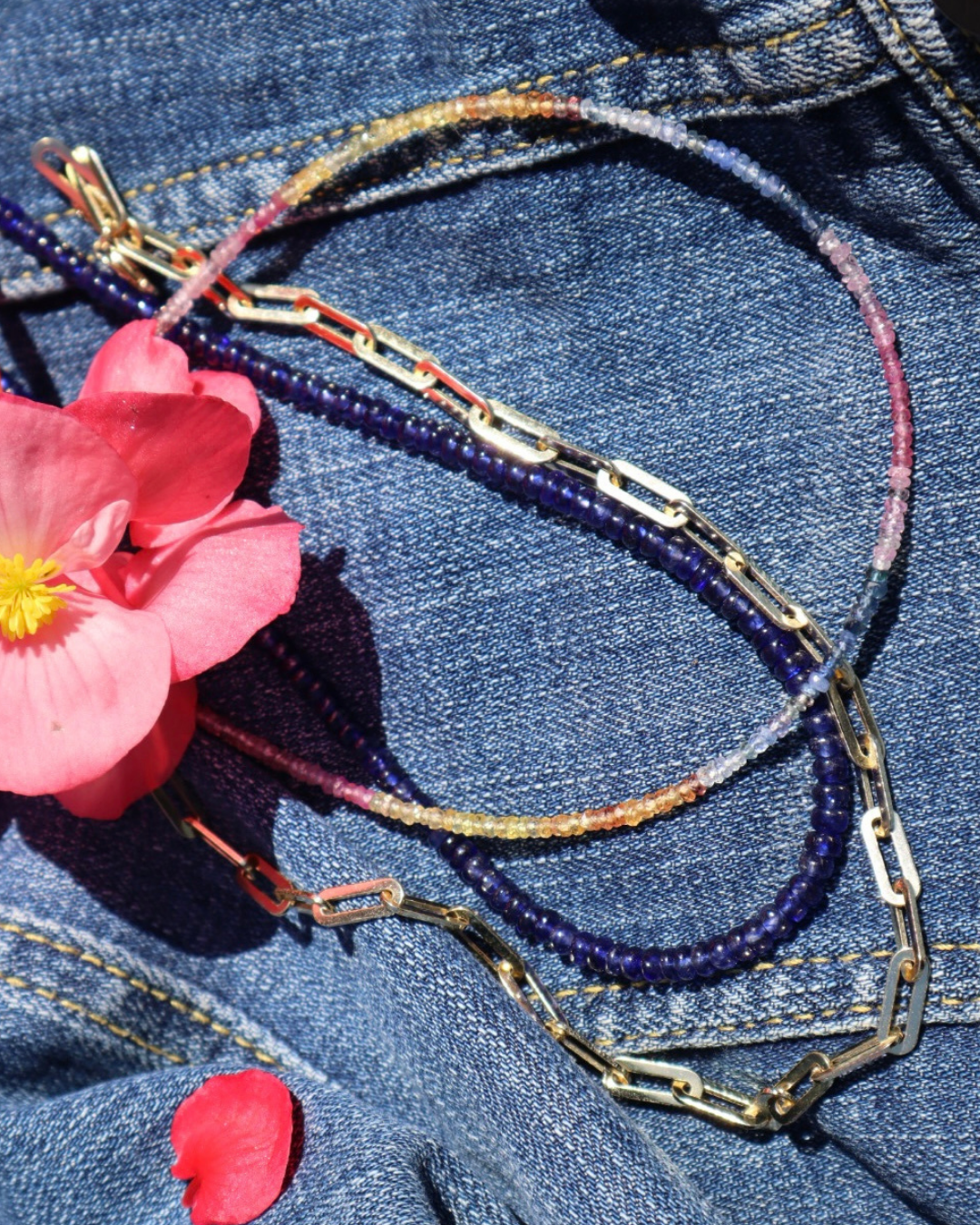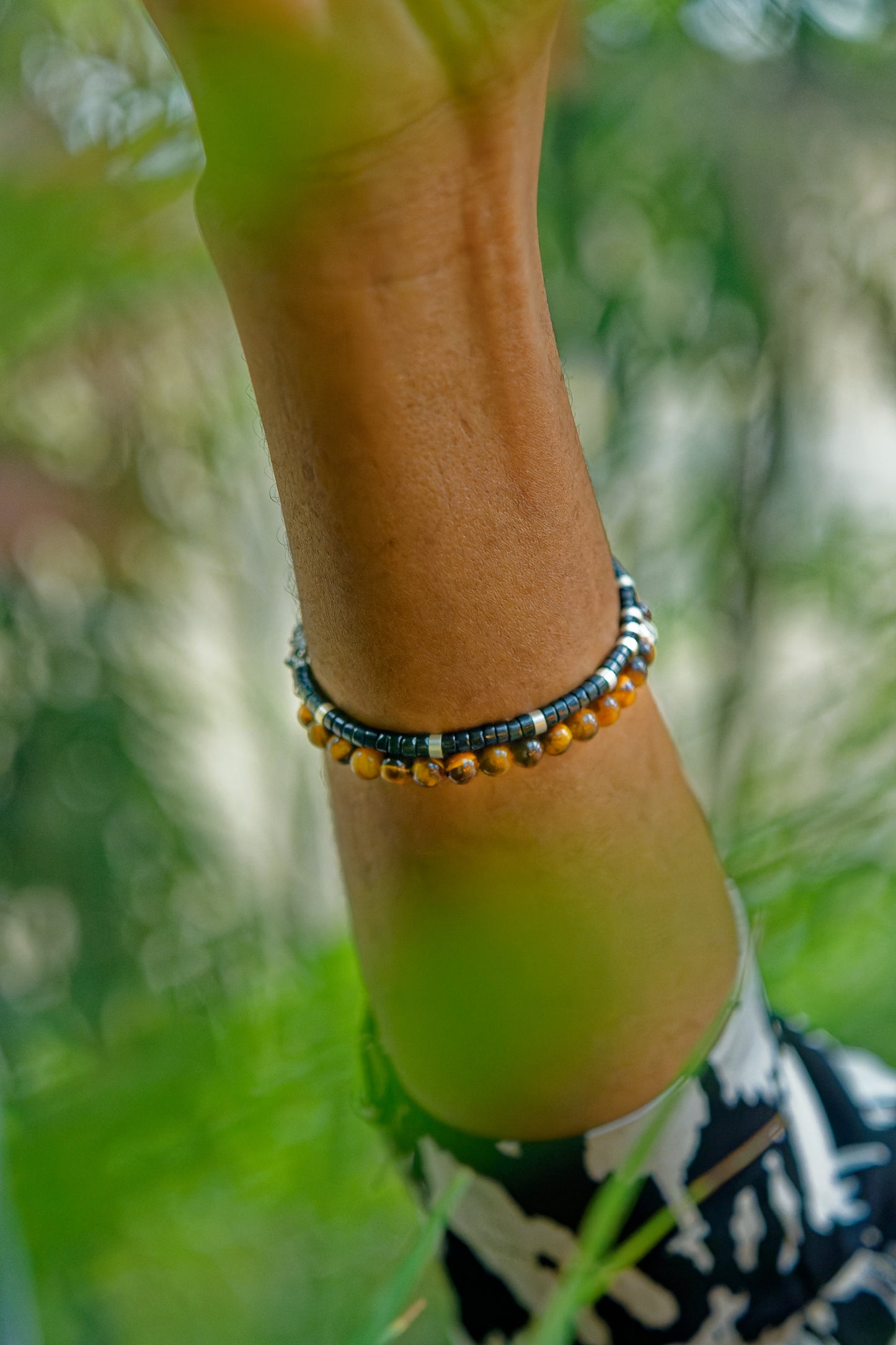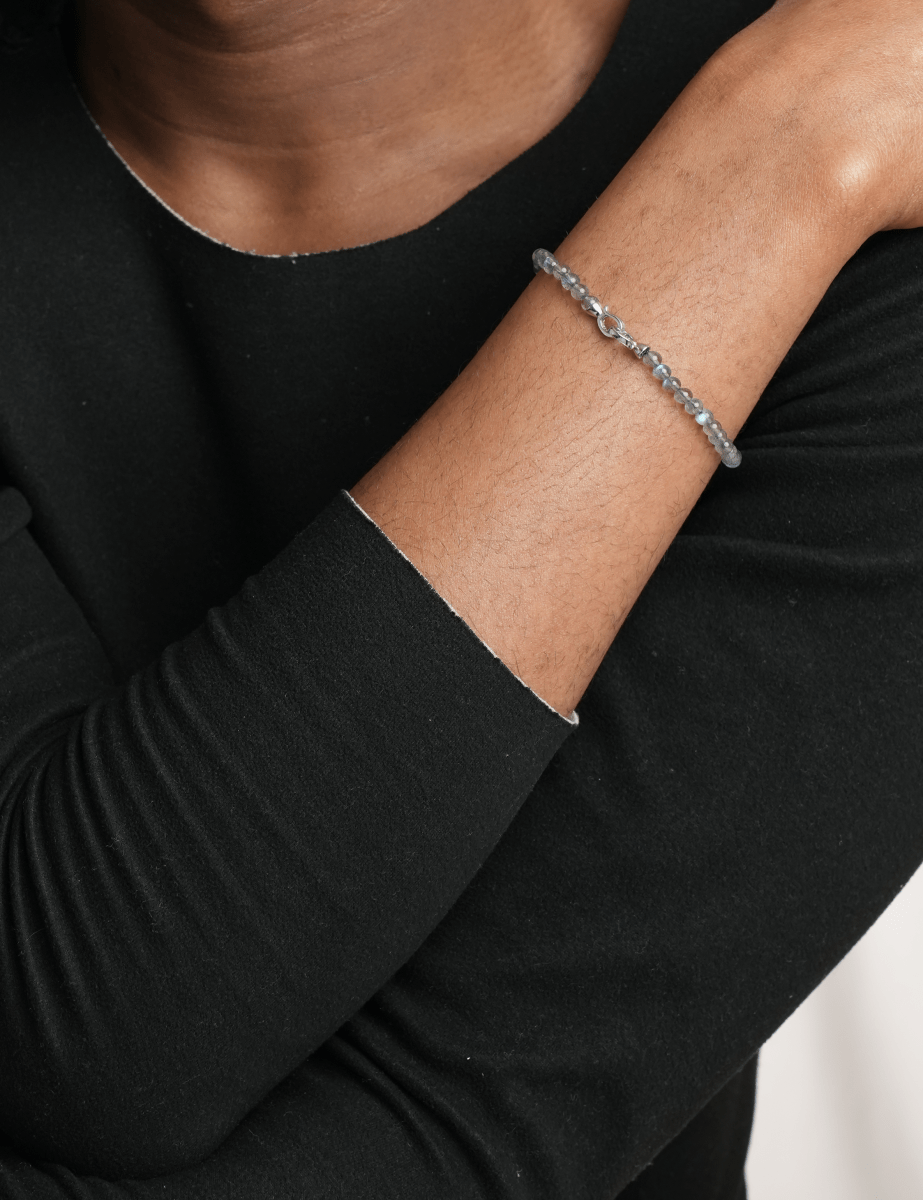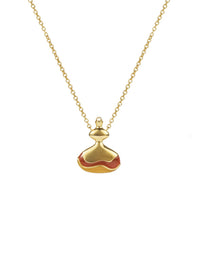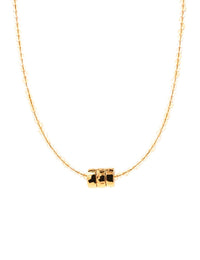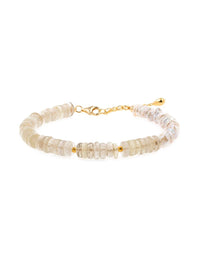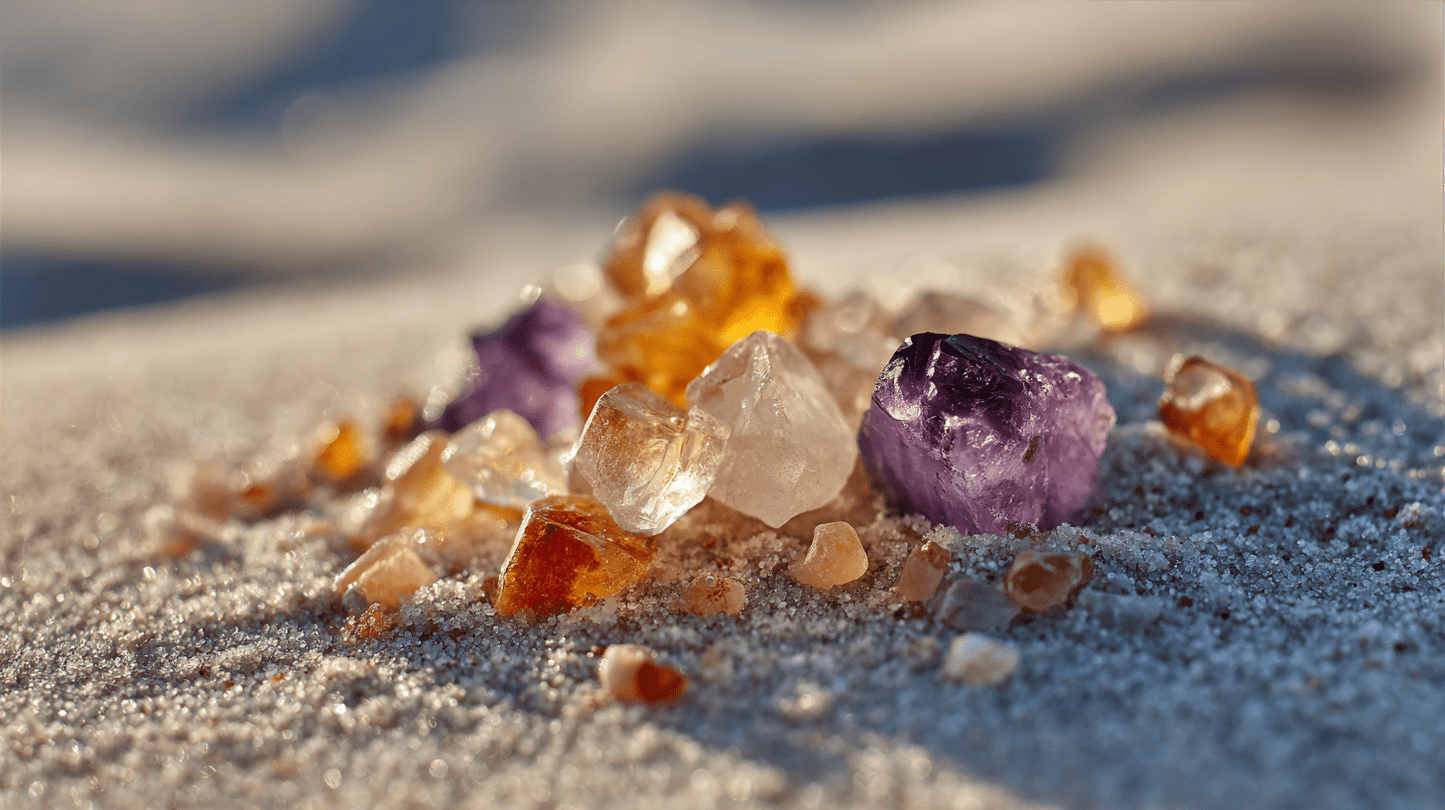Just apply the code below at checkout to get your discount.

Beginner’s Guide to Making Handmade Gemstone Jewelry in 2025
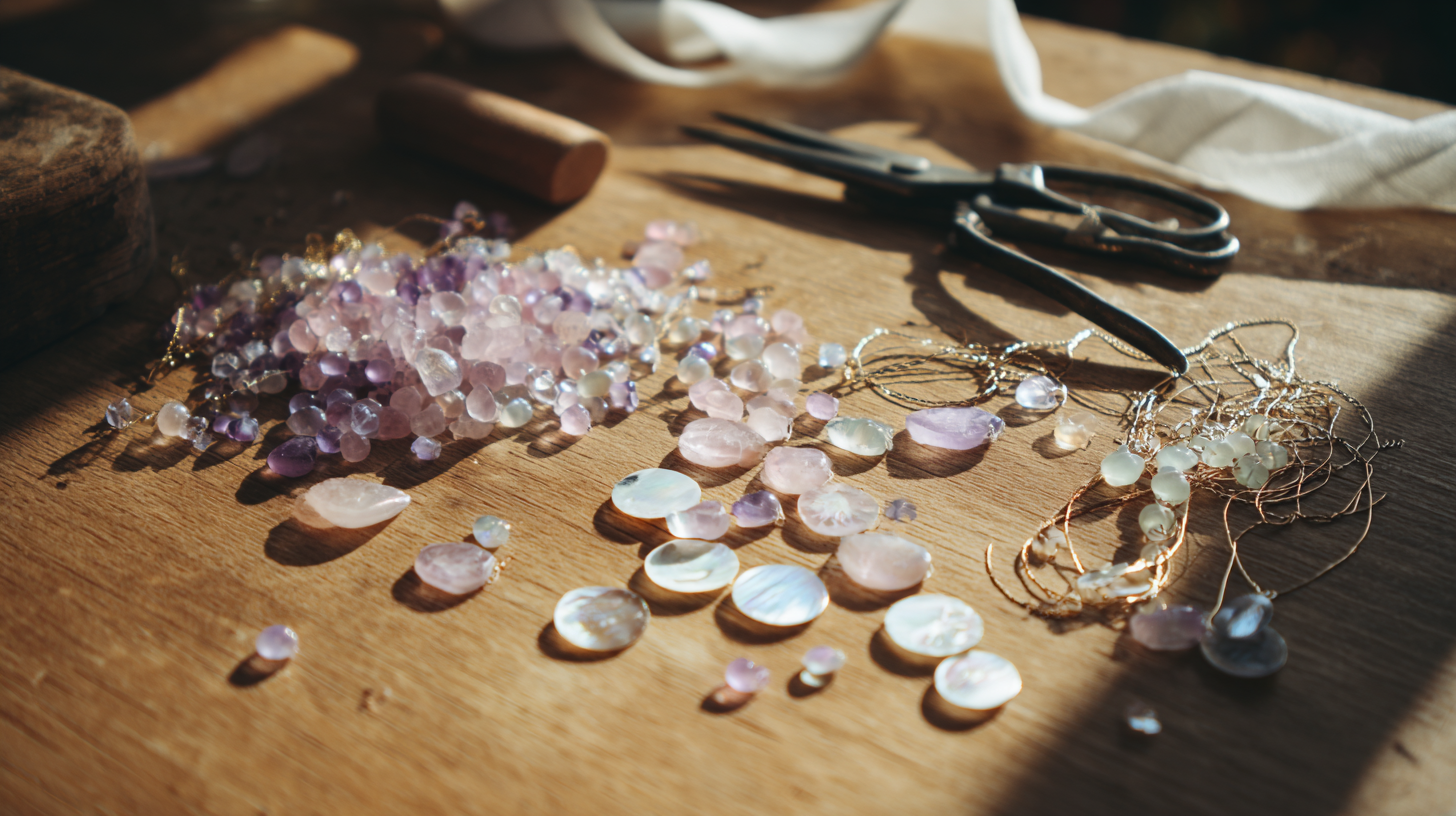
You can succeed in handmade gemstone jewelry crafting, even if you are just starting out. In 2025, jewellery making feels easier than ever. Beginner kits and online tutorials guide you step by step. Many people now learn jewelry making from home.
When you make your own jewelry, you unlock creative joy and express your style.
Look at how accessible jewelry has become:
The jewelry market keeps growing because more people want unique, handmade pieces. You do not need special skills to get started. With the right tools, tutorials, and a willingness to try, you will learn jewelry making and discover how to make jewelry that feels personal. Mistakes help you grow, so keep experimenting as you learn how to get started making jewelry and explore the world of handmade gemstone jewelry.
Key Takeaways
You can start making beautiful handmade gemstone jewelry with simple tools and beginner kits, even without prior experience.
Choosing natural gemstones and ethical materials adds personal meaning and uniqueness to your jewelry pieces.
Basic techniques like wire wrapping and beading let you create secure and stylish jewelry without needing advanced skills.
Setting up a safe, organized workspace helps you work confidently and enjoy the creative process.
Learning from mistakes, seeking help from online communities, and practicing regularly will improve your skills and inspire your creativity.
Handmade Gemstone Jewelry Basics
What Makes Gemstone Jewelry Unique
Handmade gemstone jewelry stands out in a world full of mass-produced pieces. When you create your own jewellery, you add a personal touch that no machine can copy. Each piece tells a story. You choose the colors, shapes, and stones that speak to you. This makes every necklace, bracelet, or ring feel special.
Many people love handmade gemstone jewelry because it shows individuality and natural beauty. Artisans value authenticity and craftsmanship. You can see the care in every detail. Unlike factory-made items, handmade pieces often use natural stone beads and ethical materials. The global handmade jewelry market keeps growing fast. People want unique, artisan-crafted jewellery that reflects their values and style. The market reached $151.5 billion in 2022 and is expected to triple by 2032. This growth shows that more people care about sustainability and the story behind their jewelry.
When you wear handmade gemstone jewelry, you celebrate your own creativity and support ethical practices.
Gemstone jewelry also stands out for its spiritual and personal meaning. Many designs use symbols or stones believed to bring good energy or healing. Quartz, for example, is popular for its beauty and its reputation for amplifying positive energy. You can find jewellery that feels like a personal talisman, not just a fashion statement.
Popular Gemstone Types
As a beginner, you have many gemstone options to explore. Some stones are easy to work with and look beautiful in simple designs. Here are some favorites:
Amethyst: Known for its purple color and calming energy.
Rose Quartz: Loved for its soft pink shade and gentle vibe.
Clear Quartz: Versatile and easy to find, perfect for many projects.
Aventurine: Green and sparkly, often linked to luck.
Lapis Lazuli: Deep blue with golden flecks, adds a bold touch.
Tiger’s Eye: Brown and gold stripes, believed to bring confidence.
You can mix these gemstones with different metals or beads to create jewellery that matches your style. Start with a few stones that inspire you. Let your creativity guide you as you learn new techniques and make each piece your own.
Jewelry Making Tools and Materials
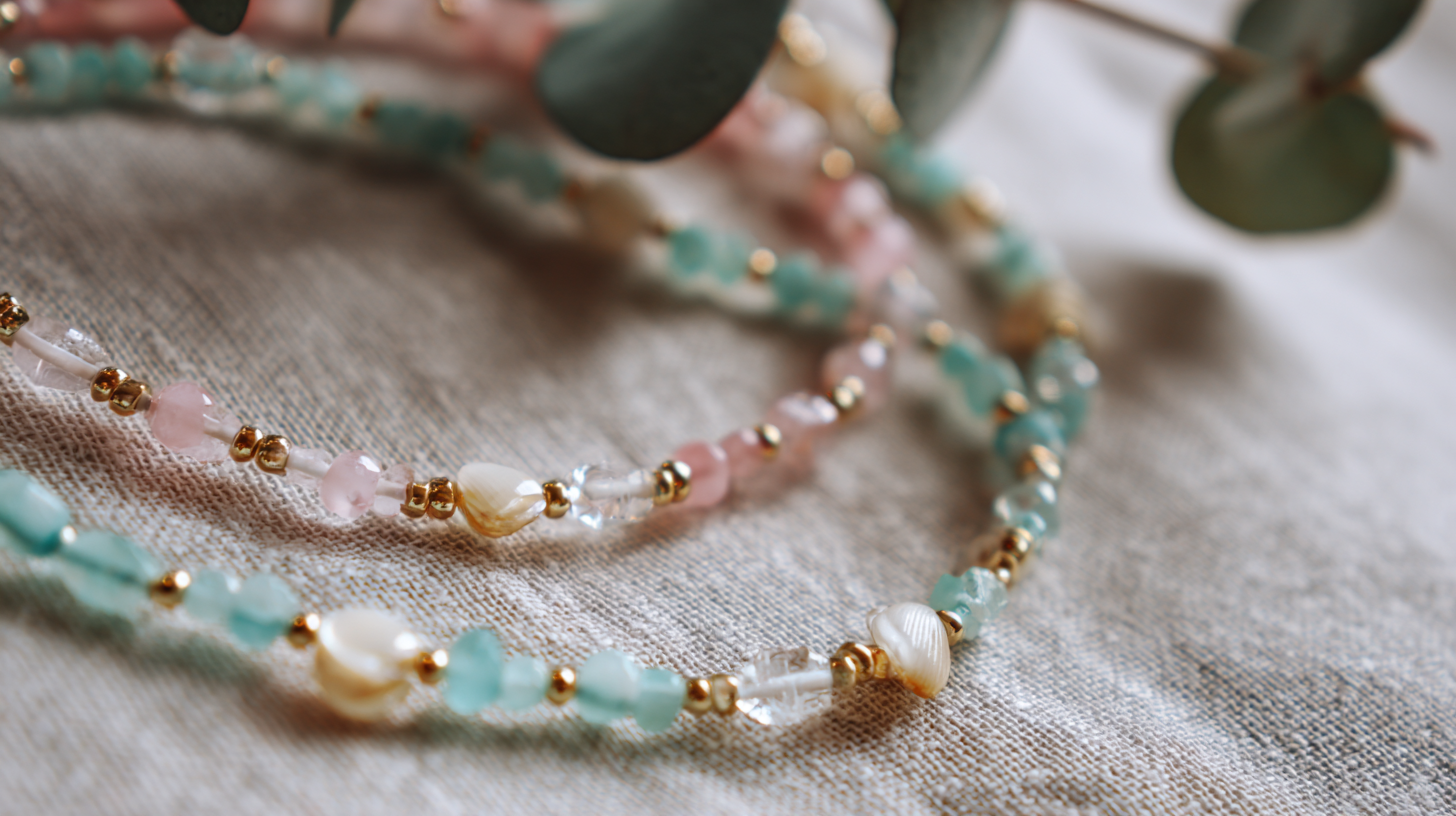
Essential Tools for Beginners
You can start your jewelry making journey with just a few basic tools. These tools help you shape, connect, and finish your pieces. Here are the essentials you need for most jewellery making projects:
Round-nose pliers: Shape wire into loops and curves for different settings.
Chain-nose pliers: Grip, bend, and tuck wire ends for a neat finish.
Wire cutters: Trim wire and beading thread with precision.
Flat-nose pliers: Hold and flatten wire, especially when working with bezel settings.
Bead mat: Keep beads from rolling away while you work.
Ruler or measuring tape: Measure your jewelry for the perfect fit.
Beginner kits often include these tools and a selection of wires, beads, and findings. You can find these kits at craft stores or online shops. Many kits come with step-by-step guides, making it easy to learn new techniques and settings.
Choosing Gemstones and Beads
Selecting the right gemstones and beads brings your jewelry to life. You want to choose supplies that match your project and skill level. Here are some tips to help you get started:
Pick beads and supplies based on your project to avoid confusion and waste.
Use strong threads like Fireline or Wildfire for crystal beads. These threads prevent breakage from sharp edges.
Semi-precious gemstone beads are natural and unique. They work well for stringing but can be fragile with multiple threading passes.
Seed beads are great for beginners. Their small size and versatility make them perfect for simple stringing and bead weaving.
Trusted brands like Miyuki, Toho, Preciosa, and Matubo offer quality and consistency. This reduces frustration and helps you achieve better results.
Avoid unbranded or plastic beads. These may wear out quickly or lose color.
Czech glass beads come in many shapes and sizes. They add creative flair to your jewellery making projects.
Tip: Start with a few gemstone types that inspire you. Let your creativity guide your choice of settings and techniques.
Workspace and Safety
A safe and organized workspace helps you enjoy jewelry making and protects your health. Set up your area with good lighting and a sturdy table. Store your tools and supplies in labeled containers. This keeps your settings, beads, and wires easy to find.
Safety matters in every jewellery project. Wear safety glasses and closed-toed shoes to protect yourself from sharp tools and falling beads. Use aprons and rubber gloves when handling chemicals or cleaning solutions. Keep chemicals in sealed, labeled containers away from heat sources. Always have a fire extinguisher nearby, but not too close to your work area. Secure oxygen and fuel tanks if you use them for soldering. Work on fire-resistant surfaces when using heat.
Ventilation is important. Open a window or use a fan to remove fumes from soldering or cleaning. Tie back long hair and avoid loose clothing to prevent accidents with rotary tools or torches. Keep Safety Data Sheets and a spill kit handy for emergencies.
A well-organized workspace keeps you safe and lets your creativity shine. You can focus on learning new techniques and creating beautiful jewelry with confidence.
Jewelry Making Steps
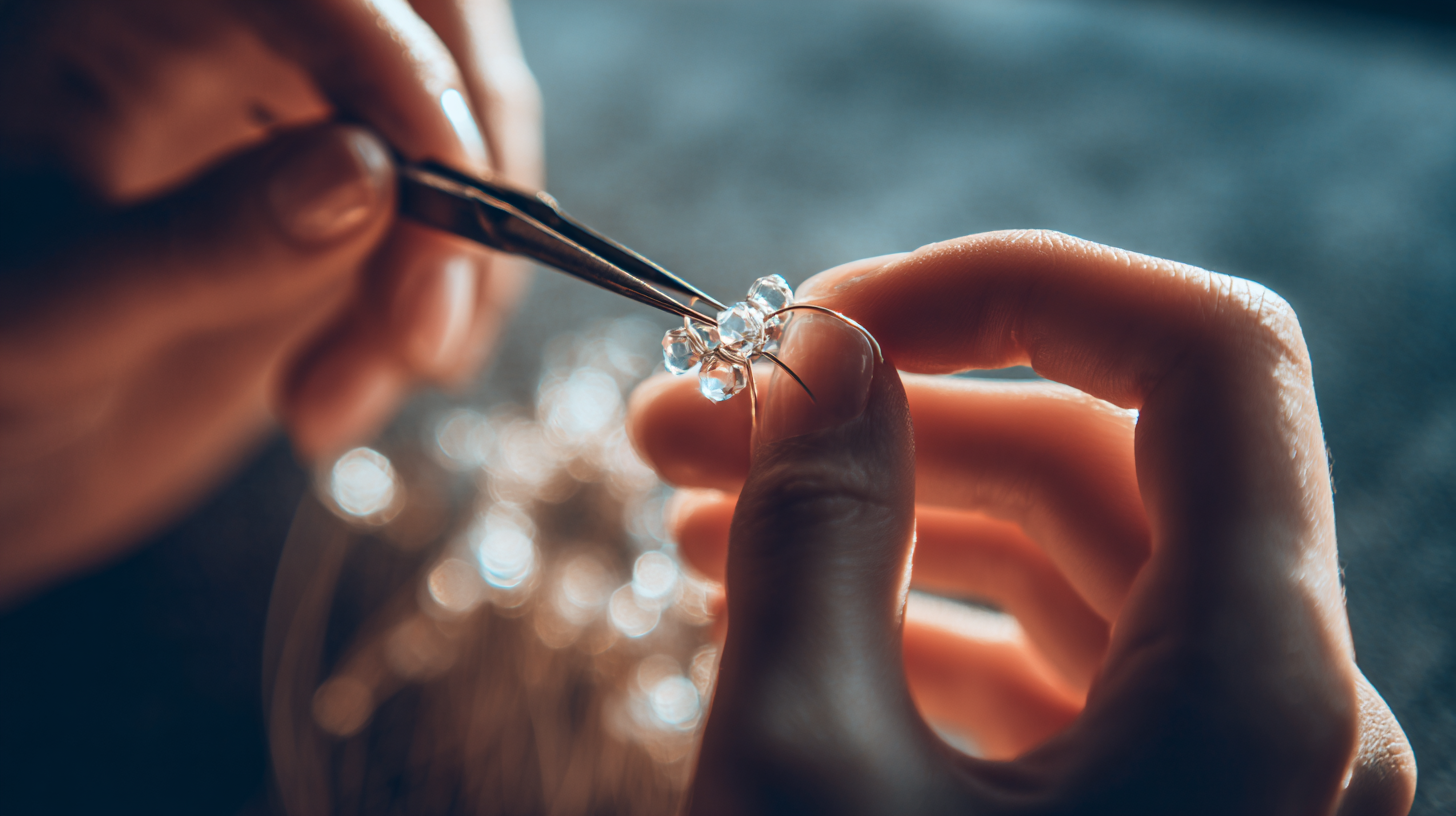
Jewelry making opens a world of creativity and self-expression. You can learn new techniques, explore different settings, and create jewelry crafts that reflect your style. This section will guide you through essential jewelry making techniques, from wire wrapping to upcycling, and help you discover how to make a gemstone ring with beginner-friendly ring settings.
Wire Wrapping Techniques
Wire wrapping is one of the most popular jewelry making techniques for beginners. You can use this method to create beautiful settings for cabochon stones, beads, and even rings. Wire wrapping does not require soldering or heat, so you can start with just a few tools and some wire.
Step-by-step guide for basic wire wrapping:
Choose your gemstone or cabochon and a piece of wire.
Cut a length of wire, usually about 10 inches for a small pendant or ring.
Hold the cabochon in place and wrap the wire around it, creating a secure bezel setting.
Use round-nose pliers to make loops and curves for the design.
Tuck the wire ends neatly with chain-nose pliers to avoid sharp edges.
Add a jump ring or bail if you want to turn your piece into a pendant or attach it to a ring band.
Tip: Practice makes perfect. Try different wire gauges and settings to see what works best for your jewelry crafts.
Wire wrapping lets you make your own bezel setting for cabochon stones. You can experiment with different shapes and sizes. Tutorials online show you how to set gemstones securely and create unique jewelry.
Beading and Stringing
Beading and stringing are classic jewelry making techniques. You can create necklaces, bracelets, and even rings using gemstone beads, seed beads, and cabochon accents. This method is beginner-friendly and requires only a few supplies.
How to get started with beading and stringing:
Select your beads, cabochon stones, and stringing material (like beading wire or elastic cord).
Lay out your design on a bead mat to plan the order and pattern.
Thread the beads onto the wire or cord, adding spacers or cabochon settings as you go.
Use crimp beads or knots to secure the ends.
Attach clasps or jump rings to finish your jewelry.
You can find many tutorials that teach you how to make jewelry using beading and stringing. These guides help you learn new techniques and settings, such as how to make a bezel set cabochon ring or a multi-strand bracelet.
Note: Strong threads like Fireline or Wildfire work well for crystal beads and cabochon settings. They prevent breakage and keep your jewelry crafts looking great.
Upcycling Old Jewelry
Upcycling gives new life to old or broken jewelry. You can transform outdated pieces into modern gemstone jewelry crafts. This approach supports sustainability and lets you experiment with different settings and cabochon stones.
A recent project featured in The New York Times showed how designers collected unwanted jewelry and turned it into fresh, contemporary pieces. They used creative techniques to combine old settings, cabochon stones, and beads. The result was a collection of unique jewelry crafts displayed in a Manhattan exhibition. You can do the same at home by gathering unused jewelry and reimagining it with new cabochon settings or gemstone accents.
How to upcycle jewelry:
Sort through your old jewelry and pick out pieces with interesting settings or cabochon stones.
Clean each piece thoroughly before starting.
Remove stones, beads, or cabochon accents you want to reuse.
Combine elements from different pieces to create a new design.
Use wire wrapping, beading, or bezel settings to assemble your new jewelry.
Upcycling helps you practice jewelry making techniques and create one-of-a-kind jewelry crafts. You also reduce waste and support ethical jewelry making.
Gemstone Ring Projects
Making your first gemstone ring feels exciting and rewarding. You can start with a simple cabochon and a wire band. This project teaches you how to make a gemstone ring using beginner-friendly ring settings and bezel techniques.
Simple Gemstone Ring Project:
Select a cabochon stone and a length of wire (about 8-10 inches).
Place the cabochon on the wire and wrap the wire around the stone to form a bezel.
Shape the wire into a ring band, making sure it fits your finger.
Twist the wire ends together under the cabochon to secure the setting.
Tuck in any sharp ends with pliers for comfort.
Adjust the bezel and band until the cabochon sits securely.
You can repeat these steps to create rings with different cabochon stones and settings. If you want to learn how to make a bezel set cabochon ring, many tutorials show you each step in detail. These guides help you master how to make jewelry and explore new jewelry making techniques.
Callout: Always use suitable tools and safety measures. Prepare and clean your metal pieces before starting. Heat and quench the metal as needed to keep it soft and easy to work with. This process helps you achieve consistent results and prevents damage.
Table: Common Beginner-Friendly Ring Settings
Setting Type |
Description |
Best For |
|---|---|---|
Wire Wrapped |
Uses wire to hold the cabochon in place |
Quick projects |
Bezel |
Metal strip surrounds the cabochon |
Secure settings |
Prong |
Small prongs grip the cabochon |
Faceted stones |
Glue-On |
Cabochon glued to a flat ring base |
Simple designs |
You can make your own bezel setting for cabochon rings using wire or metal strips. Tutorials and guides help you learn how to set gemstones and create jewelry crafts that last. Try different techniques and settings to find your favorite style.
Remember: Every jewelry making journey starts with a single project. Use tutorials, experiment with new techniques, and celebrate your progress. You have the power to create beautiful jewelry crafts and gemstone rings that reflect your unique vision.
Creative Inspiration
Finding Your Style
You can find inspiration for your jewelry crafts everywhere. Nature offers endless ideas—look at the colors of spring blossoms or the shapes of leaves and stones. Many people draw inspiration from current trends, such as layering jewelry pieces or using colorful gemstones like sapphires and amethysts. Personal stories also shape your style. You might choose a ring design that reminds you of a special place or event. Surveys show that more than half of buyers value emotional connection and style when picking a ring. Many women now buy jewelry for themselves, using each piece to express their unique personality. You can let your jewelry crafts reflect your journey and values.
Project Ideas
You can try many creative projects to grow your skills. Experiment with enameling, polymer clay, or faceted stones to add new textures and colors to your jewelry crafts. Join online communities or contests, where both beginners and professionals share their designs. These groups encourage you to try complex projects or mix materials for bold results. For example, you can create a statement necklace with oversized stones or design a ring with a mix of metals. The story of Robinson's Jewelers shows how you can work with designers to create a custom ring that blends vintage and modern styles. You can also explore sustainable jewelry crafts by using recycled metals or lab-grown stones.
Trend Category |
Description |
|---|---|
Sustainable Jewelry |
Use recycled metals and lab-grown stones for eco-friendly projects. |
Minimalist Jewelry |
Create simple, stackable ring designs for everyday wear. |
Statement Pieces |
Make bold jewelry crafts with oversized stones and unique patterns. |
Personalization |
Add engraving or birthstones to your ring or necklace designs. |
Overcoming Creative Blocks
Everyone faces creative blocks. You can overcome them by trying new jewelry making techniques or combining different materials. Look at jewelry crafts from other cultures or time periods for fresh ideas. Sometimes, just changing your workspace or listening to music helps you see your designs in a new way. Remember, your style grows with each project. Celebrate small wins and keep exploring new jewelry crafts. Your next ring or necklace might become your favorite design yet.
Tip: Let inspiration guide you, but do not fear mistakes. Every project teaches you something new about jewelry crafts and your own creative journey.
Troubleshooting and Tips
Common Mistakes
You might feel frustrated when your jewelry does not look like the examples you see online. Many beginners face this. Sometimes, your settings feel loose, or your bezel does not hold the stone tightly. You may find your jewelry crafts break after a few wears. These problems happen to everyone at first.
To fix loose settings, check if you wrapped your wire tightly enough. Try using pliers to press the bezel closer to the stone. If your jewelry crafts break, look at your wire or thread choice. Stronger materials help your settings last longer. When you make your own bezel setting, practice with extra wire before starting your main project. This helps you learn how to set gemstones securely.
Another common mistake is using too many beads or heavy stones. This can make your jewelry crafts feel bulky or uncomfortable. Start with simple designs and beginner-friendly ring settings. Focus on learning how to make a bezel set cabochon ring before moving to complex settings. Each project teaches you more about jewelry and how to improve your settings.
Tip: Keep a notebook of your jewelry crafts. Write down what worked and what did not. This helps you grow faster and avoid repeating mistakes.
Getting Help
You do not have to solve every problem alone. Many jewelry makers share advice in online groups and forums. You can post photos of your jewelry crafts and ask for feedback on your settings or bezel work. People love to help beginners learn how to make a gemstone ring or how to set gemstones.
Look for eBooks and video guides that show step-by-step instructions for different settings. These resources explain how to make your own bezel setting and how to fix common jewelry problems. Local craft stores often offer classes where you can practice jewelry crafts with others.
Note: Every jewelry maker started as a beginner. You will find support and inspiration in the jewelry community. Keep asking questions and trying new settings. Your skills will grow with every piece you finish.
You just finished your first handmade jewelry piece. Celebrate this moment! Every time you make jewelry, you learn something new. Try new designs, shapes, and colors. Join a jewelry group or take a local class. You can find free tutorials online to help you grow. Explore advanced jewelry techniques and share your jewelry with friends. Each jewelry project brings you closer to your creative dreams. Keep practicing, and your jewelry skills will shine brighter every day. 🌟
FAQ
How do you start making gemstone jewelry if you have never tried before?
You can begin with a simple kit and a few basic tools. Follow online tutorials. Try easy projects like bracelets or learn how to make a gemstone ring. Each step builds your confidence and skills. You will see progress with every piece.
What are beginner-friendly ring settings for gemstone rings?
You can use wire wrapping, glue-on, or simple bezel settings. These beginner-friendly ring settings help you secure stones without advanced tools. Try to make your own bezel setting for a unique look. Practice helps you master how to set gemstones with ease.
How do you make a bezel set cabochon ring at home?
You can wrap a strip of metal or wire around your cabochon. Shape it to fit your finger. Secure the stone by folding the edges over it. Many guides show how to make a bezel set cabochon ring step by step.
What should you do if your gemstone feels loose in the setting?
Check your setting and gently tighten it with pliers. If you use a bezel, press the edges closer to the stone. Practice how to set gemstones securely. You can always make your own bezel setting for a better fit.
